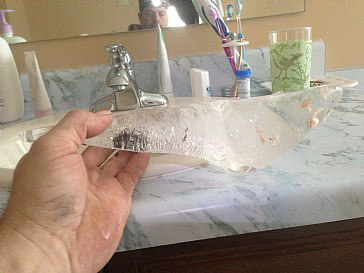Bath fan installed in old house
 10/10/2013 at 11:35:53 AM
10/10/2013 at 11:35:53 AM
I'm trying to install a bath fan where there is none existing. I have asked a few people of how to do so and I'm getting different answers from each one.
I know that the ducting needs to be insulated but I'm cutting through a vapor barrier and need to know does the vapor barrier go over the fan and also cancellation go over top of it.
I'm connecting the fan to gooseneck vent on my roof, the fan has a dampener installed into it and I don't know if there needs to be another dampener near the gooseneck.
I was also told since I am cutting through the drywall from the main level to the attic I need to apply a fire retardant caulk around the fan, and I've been told that the ducting should be going on a down slope from the fan but I'm wondering of how that should be done properly since the fan will be vented out through the roof.
Any information would be greatly appreciated.
 10/10/2013 at 7:25:14 PM
10/10/2013 at 7:25:14 PM
Nick,
The fan comes with a metal box that goes on the attic side. Wiring is all done up there except for the switch which goes, usually, close to the door. Once in place, the ducting will go from the fan to the gooseneck vent but should be a flexible duct. The flexible ducting can allow for a bit of a downward slope before going up to the roof. This allows for any condensation and other foreign obstacles to settle without flowing back to the fan.
The damper at the fan is good. The second damper in the vent keeps snow, rain and critters such as birds, squirls, and other rodents from entering the house. The plastic vapour barier goes over the metal fan insert and under the insulation. Seal any cuts or holes with tuck tape (the red stuff) and try to make it as air tight as possible.
Don't know about the fire retardant caulk, but it might not be a bad idea.
Hope this helps.
Mark
 10/13/2013 at 2:28:13 AM
10/13/2013 at 2:28:13 AM
You will always get different answers. Everyone has different opinions, material choices and standards of workmanship.
1. Yes you need a vapour barrier around the fan box sealed with tuck tape to the existing vapour barrier and to the ducting. Insulation will then go over everything.
2. The gooseneck should have a damper or grate to keep out any critters.
3. Fire retardant caulk might be a local requirment. Not a bad idea anyway and only costs about $10 for the caulking.
4. If the ducting will have any horizontal run, that section must be sloped slightly towards the fan (1/4" per foot is fine). Any condensation build up needs to flow back to the fan so that it can dry up from the heat from the house. If you slope it away from the fan, the condensation will build up, freeze and could block the pipe.
The ducting should be ridgid pipe wrapped in an insulation vapour barrier sock Below is a picture of the ice build up in a flexable un-insulated duct that sloped away from the fan.

Search the TrustedPros directory and discover the best contractors in your area.
Find your home service pro

